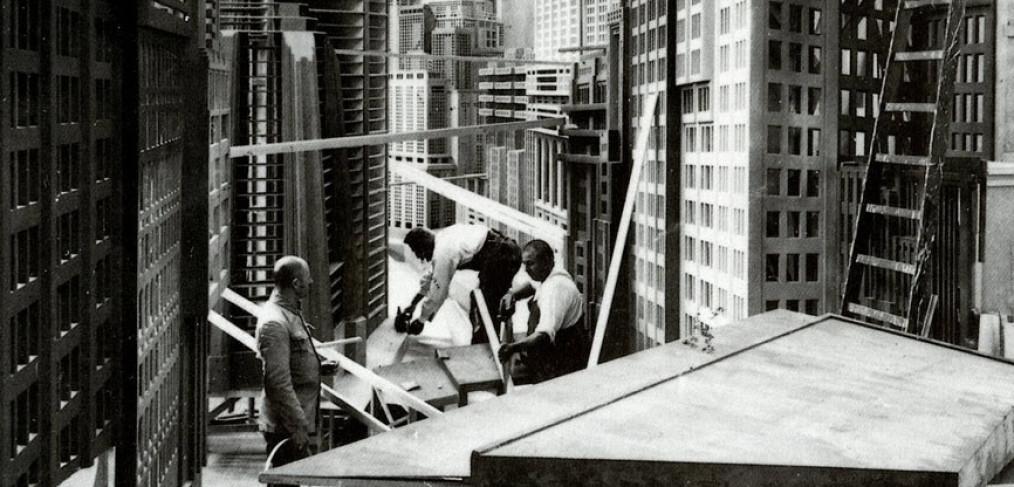
Cinema and the city
Author: Ramona Deaconu
In an interview, Rem Koolhaas states: “There’s been very little rethinking of what cities can be”.
The city is a reflection of society, a cultural product which in turn becomes a source of inspiration. Throughout time, it has oscillated between the ideal image and the negative model. New urban experience brought by the modern city of the twentieth century became a source of inspiration for the filmmakers. We can say that with modernism, the city becomes the main protagonist of cinematographic works. The relationship between the city and the cinema is a two-way street, because cinema was in turn a significant influence on the mindset of the twentieth century cities and on how they are built in the collective imaginary.
In the same interview, Rem Koolhaas also recognizes the influence of his early career in filmmaking on his practice as an architect: “Having been involved in movies in my early life, I think, really facilitated my sense of what architecture would be.” From this perspective, we can consider cinema as a tool for reflection on the contemporary city through reconsidering the evolution of urban science fiction.
Early science fiction film, as for example Fritz Lang’s modernist Metropolis (1927), depicted the city of the future where utopian and dystopian visions of the world are negotiated. The city of the future, Metropolis, is an imaginary city, but whose forms have their origin in the modern city and modern architecture of the early twentieth century. The action takes place in the year 2026 in a city hierarchically organized in vertical layers – something that could also be recognized in the current situation of several cities today. Lang’s film was the subject of much scholarly study and it never ceased to inspire later science fiction films.
The late twentieth century, is a turning point for the science fiction films, because this function of the city for the negotiation of utopia and dystopia, changes. The films in this category show contemporary cities marked by the failure of modernity. The most famous film is Ridley Scott’s Blade Runner (1982). The moment of appearance of the film is a moment of crisis of the contemporary city, and the dystopian representation in the film criticizes its decay. Although the film makes direct references to Metropolis, the difference is that in the duality with the ideal, utopic world is missing. The city of the late twentieth century is presented as fragmentary, dark, and characterized by multicultural diversity. As a consequence of a standardized production and a unifying aesthetic, the modern city and its inhabitants suffer from a sense of alienation whose solution is considered the recovery of memory. The main character is in charge of eliminating some androids whose only difference from the human being is the lack of memory, and his mission is to detect how androids’ emotions are a direct function of memory.
The contemporary science fiction addresses problems of reality, virtuality, memory, and subjectivity. The city of the future is no longer the main protagonist.The films in this category depict cities of the past or in decay that are often virtual, both in terms of the film’s setting and the relationship between characters. As Barbara Mennel writes in her book (Cities and Cinema, 2008), with the recent development in cinema, from analog to digital, from movie-going to home video, the notions of the city and futurity are no longer associated with the city. “The city itself does not signify the future anymore because futurity cannot be located in material technological development or in the built environment.” For example, the cities in Dark City, The Matrix, and Blade Runner are dystopian sites of decay based on seeing technological advancement. This advancement of technology is represented by artificial humans and special effects and threatens to empty humankind of its humanity.
Returning to the statement from the beginning, emerges the question: Can an analysis of city films answer some of the problems addressed in urban studies?








